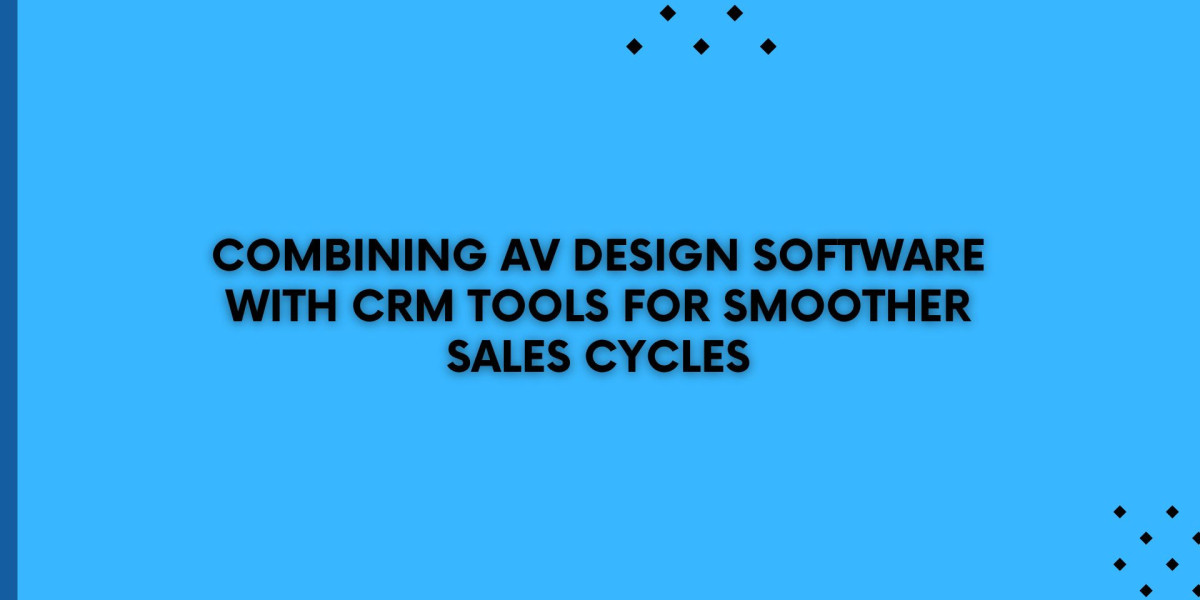In the evolving world of audiovisual (AV) design, collaboration is more important than ever. AV projects now involve diverse teams—AV designers, architects, IT specialists, project managers, and integrators—who often work from different locations and even across time zones. The shift towards hybrid work environments and global teams has made it essential to use tools that enable seamless communication and efficient project delivery. This is where AV Design Software that supports real-time revisions from remote teams becomes a game changer. In this blog, we will explore why real-time collaboration matters in AV design and how modern AV design software empowers remote teams to work smarter and faster.
The Growing Need for Real-Time Collaboration in AV Design
AV projects today are more complex than ever. From smart conference rooms and digital classrooms to immersive museums and large-scale venues, these systems integrate audio, video, control, and network technologies. Each project typically involves:
Designers who create the system layout.
Engineers who handle signal flow and network planning.
Contractors who install and configure the equipment.
Clients who provide feedback and approvals.
When these stakeholders are not working from the same location, communication delays can slow down projects, introduce errors, or result in costly rework. Real-time collaboration through AV design software eliminates these challenges by allowing all parties to contribute to the design as it evolves.
How AV Design Software Supports Real-Time Revisions
Modern AV design software offers several features that enable teams to collaborate effectively no matter where they are:
1. Cloud-based platforms
AV design software that operates on the cloud ensures that everyone works from a single source of truth. This means:
The latest version of the design is always available to all team members.
Updates made by one person are visible to others instantly.
There is no need to exchange files back and forth, reducing the risk of version conflicts.
Cloud platforms provide a shared workspace that keeps projects moving forward without delays.
2. Real-time editing and commenting
Advanced AV design software allows multiple users to view and edit diagrams simultaneously. Team members can:
Move devices, adjust layouts, or modify signal paths while others watch in real time.
Leave comments or annotations directly on the design for specific changes or questions.
Resolve issues faster by discussing changes within the platform rather than through endless email chains.
This feature helps teams make decisions on the fly and maintain momentum on tight project schedules.
3. Device libraries and shared standards
When remote teams work together, it is important to use consistent symbols, templates, and equipment data. AV design software provides:
Standardized device libraries with accurate specifications.
Templates that align with industry standards for diagrams and documentation.
Shared settings that ensure a uniform look and feel across all project drawings.
This consistency improves clarity and reduces errors during installation.
4. Integration with other platforms
AV design software that integrates with CAD, BIM, and project management platforms helps remote teams:
Align AV designs with architectural and engineering plans.
Coordinate timelines, tasks, and deliverables through linked project management tools.
Maintain compliance with building codes and client specifications.
Integration ensures that AV designs fit into the larger construction or renovation project without conflicts.
5. Version control and history tracking
With so many hands involved in a project, keeping track of revisions is essential. AV design software supports:
Automatic versioning so teams can review changes over time.
The ability to roll back to earlier versions if needed.
A clear audit trail of who made what changes and when.
This transparency builds trust among team members and clients alike.
Benefits of Real-Time Collaboration Using AV Design Software
The ability to make real-time revisions offers several advantages for AV professionals:
Speed: Teams can make decisions and implement changes without waiting for files to be shared and reviewed offline.
Accuracy: Errors and miscommunications are minimized when everyone sees the same design at the same time.
Flexibility: Remote and hybrid teams can contribute equally, no matter where they are located.
Cost savings: Faster decision-making and fewer mistakes mean lower project costs.
Client satisfaction: Clients appreciate being part of the process and seeing progress in real time.
Examples of AV Design Software with Real-Time Collaboration Features
Several platforms stand out for their support of remote team collaboration:
XTEN-AV: A cloud-based, AI-powered platform designed specifically for AV professionals. It offers real-time editing, device libraries, signal flow diagrams, and seamless sharing with team members.
AutoCAD with cloud integration: Suitable for teams that need detailed CAD drawings and want to share files through cloud storage.
Revit with BIM 360: Ideal for projects that require tight integration with building models and construction teams.
Each tool has strengths depending on the size and scope of the project.
Best Practices for Using AV Design Software with Remote Teams
To get the most from AV design software, follow these best practices:
Set clear collaboration rules, such as who can edit, review, or approve designs.
Schedule regular virtual meetings to discuss changes and next steps.
Train team members on using the software’s collaboration features.
Keep documentation up to date so everyone works with the latest information.
Use the software’s commenting and annotation tools to capture decisions in context.
These practices help ensure smooth teamwork and high-quality results.
Conclusion
As AV projects grow in complexity and teams become more distributed, the need for real-time collaboration has never been greater. AV Design Software that supports live revisions and cloud-based teamwork allows professionals to work together efficiently, no matter where they are located. By adopting these tools, AV teams can improve accuracy, speed up delivery, and exceed client expectations on every project. In a world where connectivity defines success, collaborative AV design software is the key to staying ahead.
Read more: https://filmfinder.com/read-blog/49769






